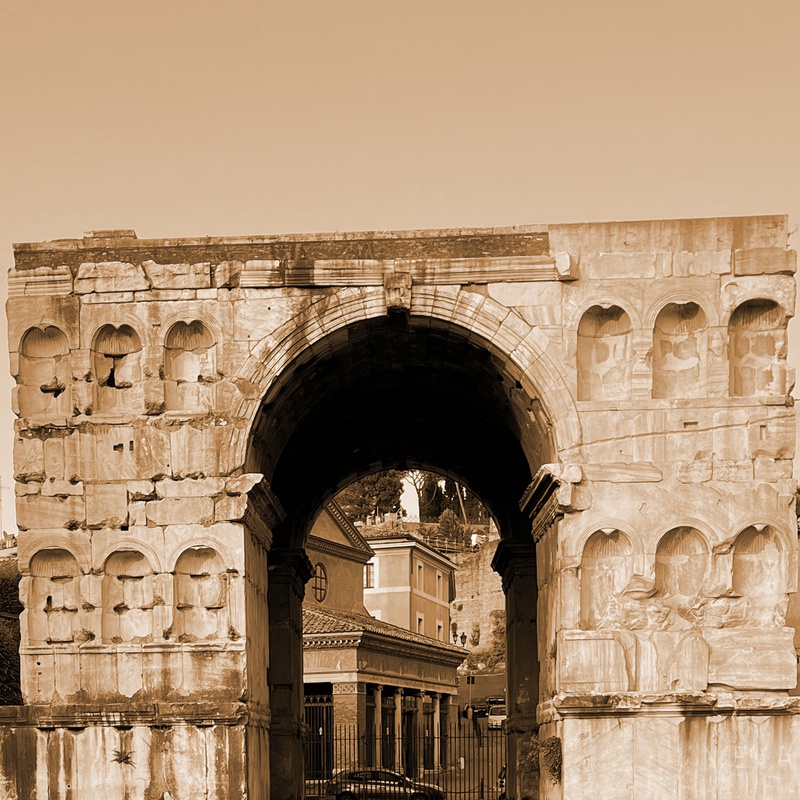Posted by Roberto D'Autilia on 09 Jul 2022
Arch of Janus
4th century CE, Rome
Archaeological artifact
The Arch of Janus, an ancient Roman architectural marvel, stands as a testament to the grandeur of Rome's imperial past. Erected in the early 4th century CE, this unique quadrifrons triumphal arch is situated at the Forum Boarium, near the bustling cattle market and the flowing Cloaca Maxima. The arch's purpose remains a topic of debate among scholars, with theories ranging from a boundary marker to a shelter for traders. There's even speculation that it may have been dedicated to either Emperor Constantine I or his son Constantius II, and was once known as the Arch of the deified Constantine. Built using spolia, the Arch of Janus incorporated materials from earlier structures, including bricks, pottery shards, and white marble, which gave it a majestic appearance. It measures approximately 16 meters in height and 12 meters in width. The arch features two rows of three niches on each pier, likely intended to house statues, although no evidence of such statues has been found. The stone at the apex of the central arch on the north side has been thought to depict Minerva, but others argue it could represent the Palladium. The name 'Arch of Janus' likely emerged during the Renaissance, drawing inspiration from the Roman god Janus, often depicted with four faces. In medieval times, the Frangipane family fortified the structure, contributing to its preservation. Unfortunately, in 1830, the attic and upper parts were dismantled under the false belief that they were not original to the arch. The removal of iron pins in the Middle Ages has left the marble blocks with a distinctive pock-marked appearance. Today, the arch remains unrestored and inaccessible to the public, a status that has persisted since a bomb explosion in 1993 near the church of San Giorgio in Velabro. Despite this, the Arch of Janus continues to be a significant relic of Rome's architectural heritage, standing proudly within the historical landscape of the Forum Boarium.
